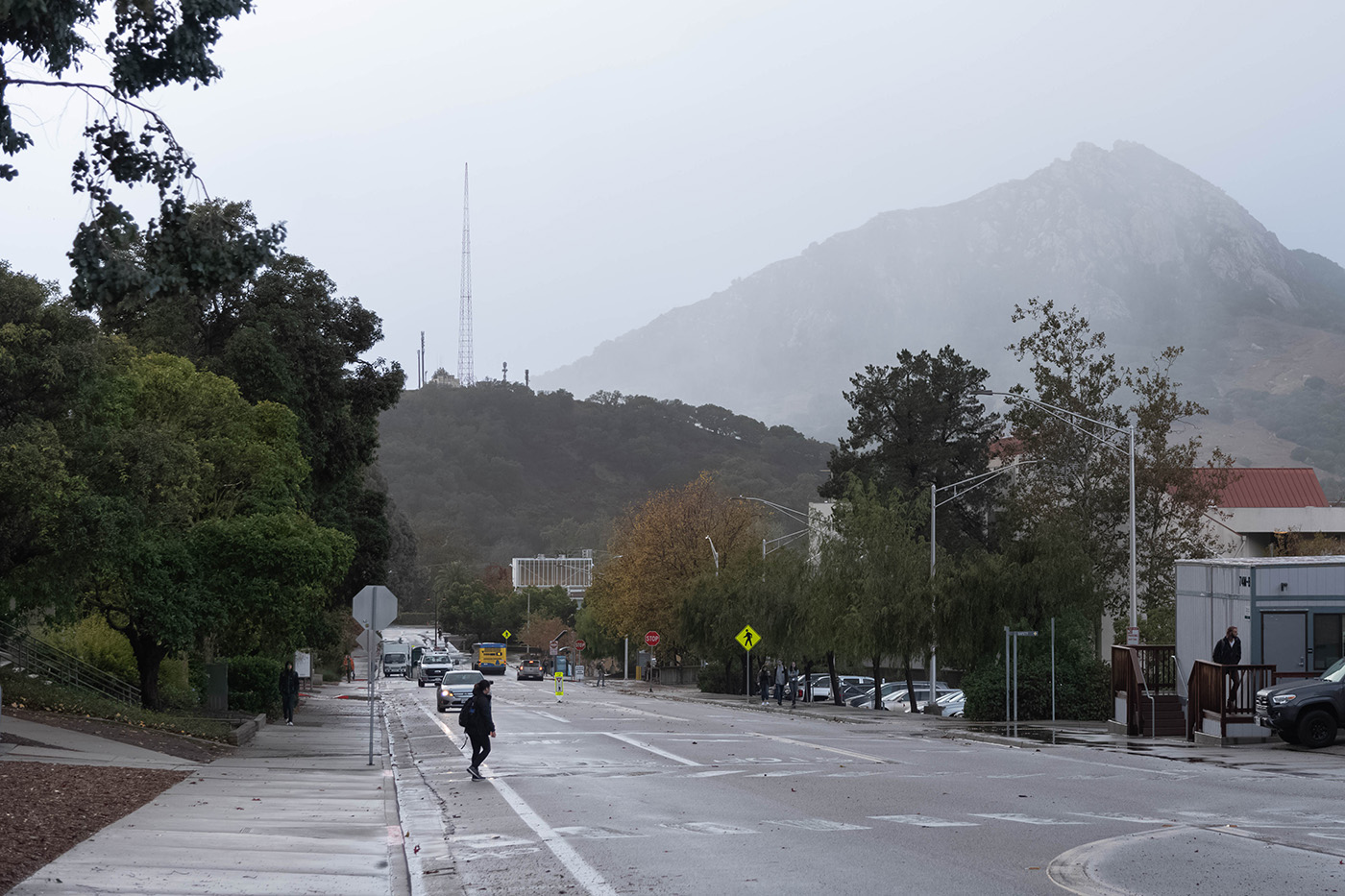More rainbows and a potential super bloom may be the reward for San Luis Obispo residents weary of the persistent rainfall and frigid temperatures.
But for now, locals will have to put up with winter weather for a little longer.
PG&E Meteorologist John Lindsey said the sunny skies this week will give way to another storm Wednesday, Feb. 20 through Thursday, Feb. 21. The storm will mimic that of the previous weekend, with light rainfall and a 10th to a third of an inch of rain, Lindsey said.
The more than 18 inches of rain measured at Cal Poly is well above the normal 12.88 inches usually measured at this time of year. Throughout the Central Coast overall, rainfall is 134 percent above average for the rainy season, which runs from July 1, 2018, through June 30, 2019.
Lindsey said a jet stream moving over the Yukon and British Columbia down to the west coast brings in frigid air masses and the storms San Luis Obispo is experiencing. This has caused temperatures in San Luis Obispo to drop to as low as 32 degrees. Paso Robles temperatures sunk as low as 27 degrees Tuesday morning.
With temperatures this cold, snow could fall as low as 2,000 feet, Lindsey said. This could mean snow on the Santa Lucia Mountains, Hi Mountain and the Cuesta Ridge.
In early March, Lindsey predicts San Luis Obispo may experience “pineapple express” conditions, marked by heavy rainfall and warmer weather. The pineapple express is an example of an atmospheric river, where sub-tropical moisture is transported north from the equator to the American West Coast.

Could a super bloom be coming?
After this, San Luis Obispo residents may possibly begin to enjoy the colorful and fragrant consequences of a wet winter: a potential super bloom of wildflowers in the Carrizo Plain and California desert.
“Nothing is guaranteed, but I think there’s a pretty decent chance of having a great bloom,” Lindsey said.
“Nothing is guaranteed, but I think there’s a pretty decent chance of having a great bloom,” Lindsey said.
Dena Grossenbacher, a biological sciences professor with a focus in botany, agreed there are many factors in favor of conditions for a super bloom. However, it is still too early to know for sure, she said.
“We’ve had good rains for keeping the ground moist for a month if not more, so that’s really good because it means things have germinated,” Grossenbacher said. “The issue is, other things that determine whether there’s going to be a super bloom have to do with the temperature, and if it’s really cold things won’t grow very much.”
The recent cold temperatures have caused frost, which could threaten the wildflower’s growth.
Even if the frost does not threaten the wildflowers, another risk to the super bloom is the presence of nonnative grasses, Grossenbacher said.
“Some wet years end up just being what we call a grass year because it’s just all grasses that out-competed all the wildflowers,” Grossenbacher said.
A potentially unexpected factor in favor of the super bloom are the 2018 wildfires in Southern California.
“Those fires wiped out all the woody shrubs and what you get are these plants called fire followers,” Grossenbacher said.
If there is a super bloom, its height will be during late March and into April. It will be apparent whether a super bloom is happening during the next three to four weeks, Grossenbacher said.
“There will be nice flowers regardless,” Grossenbacher said.
While Southern California and the Carrizo Plain are go-to destinations for wildflower viewing, Lindsey recommended a spot closer to Central California residents: Old Shell Creek Road on Highway 58, just 45 minutes from San Luis Obispo. It is Lindsey’s favorite.

